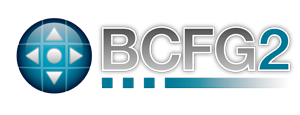
Dryrun mode (-n) prevents the client from making changes, but gives you some insight into the state of the machine. This mode is also useful if you simply want to gather data from the client into the reporting system.
The client can be run interactively (-I) so that you are able to step through each operation in order to see what the client is doing.
Paranoid mode creates a backup of a local configuration file before Bcfg2 replaces the file. This allows for easier recovery by the local administrator.
This will save a copy of the replaced file in /var/cache/bcfg2, but it’ll be named as the path to the file with /’s replaced by _’s. For example, the old /etc/hosts will be named /var/cache/bcfg2/etc_hosts.
New in version 1.0.0.
Here is an example of how to use some of the extra paranoid features available. For the following section in bcfg2.conf (client-side):
[paranoid]
path = /my/custom/backup/path
max_copies = 5
You will have the file backups store in /my/custom/backup/path. This will also keep the five most recent backups of files.
You may also want to just globally enable the paranoid attribute for all files distributed to clients from your Bcfg2 server. You can accomplish this by adding a global metadata override in your bcfg2.conf (server-side) with the following syntax:
[mdata]
paranoid=true
Note
This is the default setting.
New in version 1.0.0.
Overall client service mode. Specified on the client using -s <service mode>.